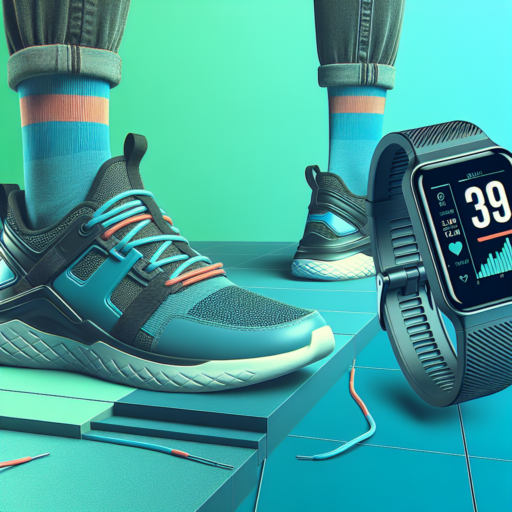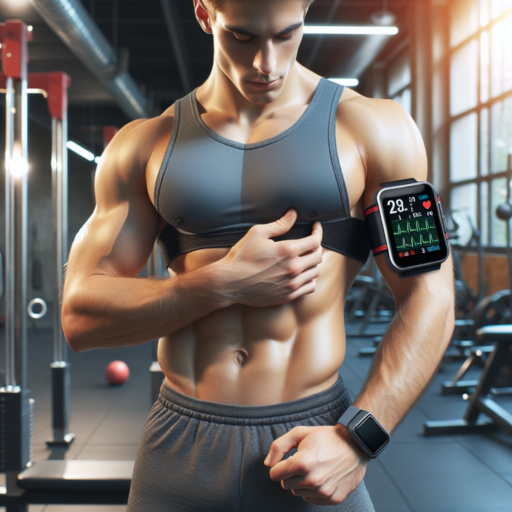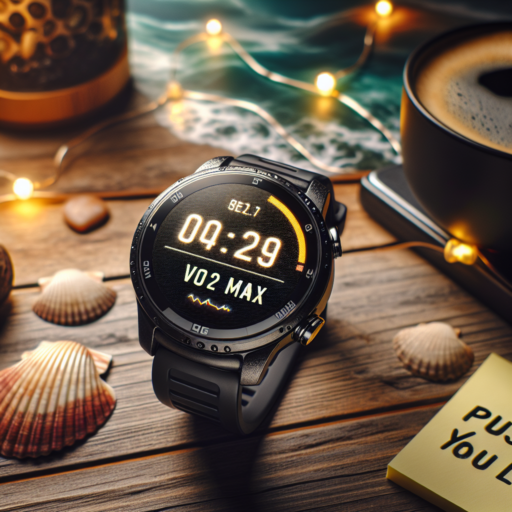What is a Walk Monitor and How Can It Improve Your Health?
A walk monitor, often referred to as a pedometer or step counter, is a device designed to record the number of steps you take. It operates on a simple mechanism that counts each step made by detecting the motion of the person’s hands or hips. Today, walking monitors have evolved beyond mere step counters. They are now integrated into smart devices and wearables, equipped with advanced features like GPS tracking, calorie burn estimates, and even heart rate monitoring. This technology serves a crucial role in motivating individuals to achieve their daily physical activity targets, making it a valuable tool for improving overall health.
Encouraging Daily Physical Activity
Physical inactivity is a leading risk factor for global mortality. Walking monitors aim to combat this by setting daily step goals, which encourage users to increase their physical activity levels. Achieving a certain number of steps each day, typically recommended as 10,000 steps, can significantly contribute to cardiovascular health, weight management, and improved mental wellbeing. By offering immediate feedback on the number of steps taken, walk monitors effectively motivate individuals to make more health-conscious decisions, like taking the stairs instead of the elevator or going for a walk during a lunch break.
Monitoring Progress Over Time
Another way walk monitors can improve your health is by allowing you to track your progress over time. Many devices come with companion apps that display detailed insights into your walking patterns, distance covered, and calories burned. This data can be invaluable in setting and achieving long-term fitness goals. By analyzing your progress, you can identify trends in your activity levels, adjust your goals accordingly, and stay motivated by celebrating your successes. Moreover, the ability to share your achievements with a community or social network can offer additional encouragement and support.
The Top Benefits of Using a Walk Monitor Daily
Integrating a walk monitor into your daily routine can significantly impact your overall health and wellbeing. These devices, designed to track your steps and walking patterns, offer more than just counting how many steps you take. Understanding the top benefits of using a walk monitor daily can inspire you to make the most out of this simple yet effective tool.
Enhanced Physical Activity Awareness
One of the primary benefits of employing a walk monitor daily is the increased awareness of your physical activity levels. It’s easy to overestimate how active we are throughout the day. However, by providing precise data on the number of steps taken, distance covered, and sometimes even calories burned, walk monitors motivate individuals to achieve their fitness goals. This awareness prompts users to make conscious efforts to move more, contributing to improved cardiovascular health and weight management.
Encouragement of Healthier Habits
Regular use of a walk monitor can also foster the development of healthier lifestyle habits. The feedback from these devices often includes not only the total steps taken but also patterns of activity throughout the day. This information can reveal periods of prolonged inactivity, urging users to incorporate more walking breaks into their schedule. Incorporating short, frequent walks has been shown to reduce the risk of chronic diseases, enhance mental health, and improve sleep quality, making walk monitors invaluable allies in the pursuit of a healthier life.
Goal Setting and Achievement
Moreover, walk monitors serve as excellent tools for setting and achieving personal fitness goals. Whether it’s aiming for a certain number of steps each day or reaching specific distance milestones, these devices provide real-time feedback and historical data to track progress over time. The sense of accomplishment from meeting or exceeding targets can significantly boost motivation and self-esteem. By setting achievable goals, individuals can gradually increase their activity levels in a manageable and sustainable way, making every step count towards a healthier future.
How to Choose the Right Walk Monitor for Your Needs
When it comes to selecting the perfect walk monitor to suit your lifestyle and fitness goals, understanding your personal needs is paramount. Walk monitors, also known as pedometers or step trackers, come in various shapes, sizes, and with a plethora of features that cater to different preferences. Whether you are a casual walker looking to keep track of your daily steps or a fitness enthusiast aiming for detailed activity tracking, the right walk monitor can make a significant difference in achieving your objectives.
Consider Your Fitness Goals
Before delving into the myriad of available walk monitor options, it’s crucial to clarify your fitness goals. Are you aiming to increase your daily step count, monitor calories burned, or perhaps prepare for a marathon? Different devices prioritize different metrics, so identifying what data matters most to you will guide your selection process. For instance, if you’re focused on improving your overall health, a simple step tracker might suffice. Conversely, if you’re training for an event, you may need a device that offers detailed insights like pace, distance, and even heart rate.
Evaluate Features and Functionality
As technology advances, so do the features offered by walk monitors. Basic models generally offer step counting and sometimes calorie estimations. However, more sophisticated devices provide a host of additional functionalities such as GPS tracking, heart rate monitoring, sleep analysis, and even smartphone connectivity for notifications and music control. Consider which features are essential for your daily use and which might be nice to have but not necessary. For instance, if you enjoy long walks or runs in unfamiliar territory, a device with built-in GPS can be invaluable.
When choosing the right walk monitor, it’s also worth contemplating the device’s user interface and ease of use. Some users may prefer a simple display that shows only essential information, while others might appreciate a touch screen with interactive features. Battery life is another critical factor, especially for those who plan on using their device for extended periods without frequent recharges. By thoughtfully considering these aspects, you can select a walk monitor that not only meets your fitness goals but also fits seamlessly into your daily life.
Step-by-Step Guide to Setting Up Your Walk Monitor
Setting up your walk monitor correctly is key to ensuring accurate tracking of your daily step count, distance, and overall physical activity. This step-by-step guide will walk you through the essential processes of getting your device ready, from unboxing to your first steps.
Unboxing and Charging Your Device
Begin by carefully unboxing your walk monitor. Inside, you should find the monitor itself, a charging cable, and possibly a quick start guide. Before you start using your device, it’s crucial to charge it fully. Connect the charging cable to your walk monitor and plug the other end into a USB power source. Charging times may vary, but a complete charge typically takes a few hours.
Downloading the Companion App
Most modern walk monitors work best when synced with a companion app on your smartphone. Search for the app mentioned in the device’s manual in your phone’s app store and download it. The app will not only help with the initial setup but also enable you to personalize your settings, view your activity data in-depth, and update the device’s firmware when necessary. Ensure your phone’s Bluetooth is on for a seamless pairing process.
Customizing Your Settings
Once your walk monitor is charged and paired with the companion app, it’s time to customize the settings to fit your needs. This typically includes setting up your profile (entering your age, weight, height, and step goal) and calibrating the device if required. Calibration is essential for enhancing the accuracy of your step count and other metrics. Look for a ‘Calibration’ option within the app or refer to the manual for specific instructions. Regularly reviewing and adjusting these settings will help ensure your walk monitor remains a valuable tool in achieving your fitness goals.
Integrating Your Walk Monitor with Smartphone Apps for Maximum Benefit
Integrating your walk monitor with smartphone apps is a pivotal step in leveraging technology to boost your health and fitness journey. In today’s digital era, the synergy between wearable technology and mobile applications presents an unparalleled opportunity for users to enhance their physical activity tracking. By connecting your walk monitor with dedicated smartphone apps, you unlock a plethora of features that go beyond mere step counting.
Real-Time Health Metrics Analysis
One of the most significant benefits of integrating your walk monitor with smartphone apps is the ability to access real-time health metrics. This integration allows for a comprehensive analysis of your physical activities, enabling you to monitor not just steps but also heart rate, calories burned, and even sleep patterns. Such detailed insights empower users to tailor their fitness routines for optimal health outcomes.
Customizable Workout Plans
Moreover, the combination of a walk monitor and a smartphone app can offer highly customizable workout plans. Based on the data collected, these apps can suggest fitness routines that cater to your specific goals, whether it’s weight loss, endurance training, or improved flexibility. This level of personalization ensures that your workout plan evolves with you, keeping you engaged and motivated.
Connecting your walk monitor with smartphone apps also brings the advantage of social connectivity. Many apps offer community features, allowing users to join challenges, share achievements, and even compete with friends. This social aspect can significantly boost your motivation and commitment to staying active, making your fitness journey both enjoyable and rewarding.
Expert Tips for Interpreting Your Walk Monitor Data
Understanding the data from your walk monitor can transform your fitness routine. By analyzing this information, you’re not just counting steps; you’re unlocking a treasure trove of insights into your health and fitness journey. However, knowing what to look for is key.
Firstly, focus on trends over time. It’s easy to get caught up in the day-to-day fluctuations. Instead, look for patterns emerging over weeks or months. This could be an increase in steps, a faster pace, or more regular movement throughout the day. These trends can help you identify improvements or areas where you might need to push a little harder.
Next, pay attention to the intensity of your walks. Your walk monitor might track this in various ways, such as measuring your heart rate or calculating your pace. High-intensity periods can indicate when you’ve been pushing yourself, perhaps walking up a steep incline or speeding up. Comparing these periods with how you felt can give insights into your endurance and cardiovascular health.
Lastly, don’t overlook the rest and recovery data, if your monitor includes it. Periods of low activity or rest are crucial for muscle repair and overall well-being. If your data shows continuous high activity without enough rest, it might be time to consider if you’re overdoing it and risking injury.
Common Mistakes to Avoid When Using a Walk Monitor
When integrating a walk monitor into your daily routine, it’s crucial to be aware of certain pitfalls that can hinder your progress and compromise the accuracy of the device. Recognizing these common mistakes can help ensure that you’re leveraging your walk monitor to its full potential, fostering a more beneficial and insightful fitness journey.
Ignoring Calibration Settings
One of the most common mistakes people make is overlooking the importance of calibration. Every walk monitor requires a certain level of personalization to accurately track your steps, distance, and other relevant metrics. Neglecting this critical setup process can lead to a significant discrepancy in your activity data, skewing your fitness metrics and impeding your ability to track progress effectively.
Wearing the Device Incorrectly
Another error that can affect the functionality of your walk monitor is not wearing it as intended. Placement and fit are key to ensuring accurate data collection. For instance, wearing the monitor too loosely may result in inaccurate step counts, while positioning it in the wrong location can interfere with its ability to monitor your activity correctly. It’s imperative to follow the manufacturer’s instructions on how to wear your device properly to get the most accurate readings.
Overlooking the Importance of Regular Updates
Finally, failing to regularly update your walk monitor’s software can lead to performance issues. Developers continuously work on improving the accuracy and functionality of these devices through software updates. By not keeping your device updated, you risk missing out on these improvements, potentially affecting the accuracy of your data and the overall user experience. Regular updates can introduce new features and bug fixes that are crucial for maintaining the effectiveness of your walk monitor.
Real-Life Success Stories: How a Walk Monitor Changed Lives
In the realm of fitness and health technology, walk monitors have emerged as game changers, transforming the mundane activity of walking into a dynamic process of self-improvement. These innovative devices do more than just count steps; they inspire, motivate, and, most importantly, produce real results. By delving into the real-life success stories of individuals who’ve had their lives changed by walk monitors, we gain a deeper understanding of this technology’s impact.
Revolutionizing Daily Routines
For many, the journey with a walk monitor begins as a simple desire to increase daily step counts. However, it quickly blossoms into a comprehensive lifestyle change. Individuals report not only improvements in physical health, such as weight loss and enhanced stamina but also significant boosts in mental well-being. This dual benefit underscores the holistic impact walk monitors have, transforming not just physical habits but also fostering a more positive outlook on life.
Building a Community
A surprising yet profound effect of walk monitors is their ability to connect people. Through shared goals and challenges, users find themselves part of a supportive community. This sense of camaraderie and collective motivation amplifies the personal achievements of each member, further demonstrating the walk monitor’s role not just as a tool for personal betterment but as a catalyst for building meaningful connections.
The stories of individuals who have incorporated walk monitors into their lives reveal a fascinating narrative of transformation. These devices serve as silent yet powerful companions on a journey towards a healthier, happier self. As more people share their tales of change and improvement, it becomes abundantly clear that the efficacy of walk monitors extends far beyond mere step tracking; they are instruments of change, empowering users to reach new heights in their personal health journeys.
No se han encontrado productos.
Frequently Asked Questions About Walk Monitors
When it comes to tracking our daily activity, walk monitors have become an indispensable tool for many of us. With a surge in their popularity, there are numerous questions that users and potential buyers might have. Let’s delve into some of the most common queries surrounding these devices.
How Accurate Are Walk Monitors?
Accuracy is often the top priority when selecting a walk monitor. Most modern devices are highly precise, thanks to advanced sensors and algorithms. However, the accuracy can vary depending on the brand, model, and how the device is worn. Calibration might enhance the precision, so it’s essential to follow the manufacturer’s instructions for setup and use.
Can Walk Monitors Help Improve My Fitness Level?
Walk monitors are not just about counting steps; they’re tools for motivation and improvement. By setting goals and monitoring progress, these devices can significantly encourage physical activity. They often come with features like reminder alerts to move or celebrate milestones, which can boost motivation for users at any fitness level.
What Features Should I Look For in a Walk Monitor?
When choosing a walk monitor, consider what features are most important to you. Battery life, water resistance, and connectivity with smartphones or other devices are common considerations. Advanced features like heart rate monitoring, sleep tracking, and GPS can also be incredibly beneficial, depending on your fitness goals and lifestyle needs.
In summary, walk monitors offer a wide array of benefits and features to suit different preferences and requirements. Their ability to track activity and motivate users makes them a valuable companion for anyone looking to improve their physical health.
Looking Ahead: The Future of Walk Monitoring Technology
Integrating Artificial Intelligence in Walk Monitoring
The integration of Artificial Intelligence (AI) in walk monitoring technology is poised to revolutionize the way we approach physical health and rehabilitation. With AI, the systems are expected to not only track but also analyze the complex data of our movements in real-time. This means an enhanced capacity for predicting potential health issues and offering personalized health interventions, tailored to individual walking patterns.
Wearable Technology Advancements
The future of walk monitoring technology also sees a significant leap in the innovation and application of wearable devices. These devices are becoming more discreet, powerful, and versatile. As we move forward, the focus is on developing wearables that can monitor a wider range of health metrics directly related to walking patterns, from muscle strength to joint mobility, providing a comprehensive overview of one’s physical well-being.
Enhanced User Accessibility
As technology advances, so does the importance of making it accessible to a broader audience. Future developments in walk monitoring are expected to emphasize user-friendly interfaces, making it simpler for individuals of all ages and tech-savviness levels to benefit from these innovations. This approach not only democratizes health monitoring but also encourages a more proactive stance toward personal health management.




